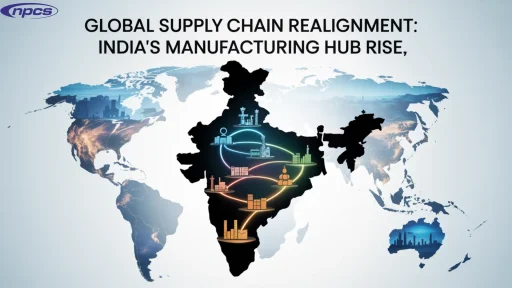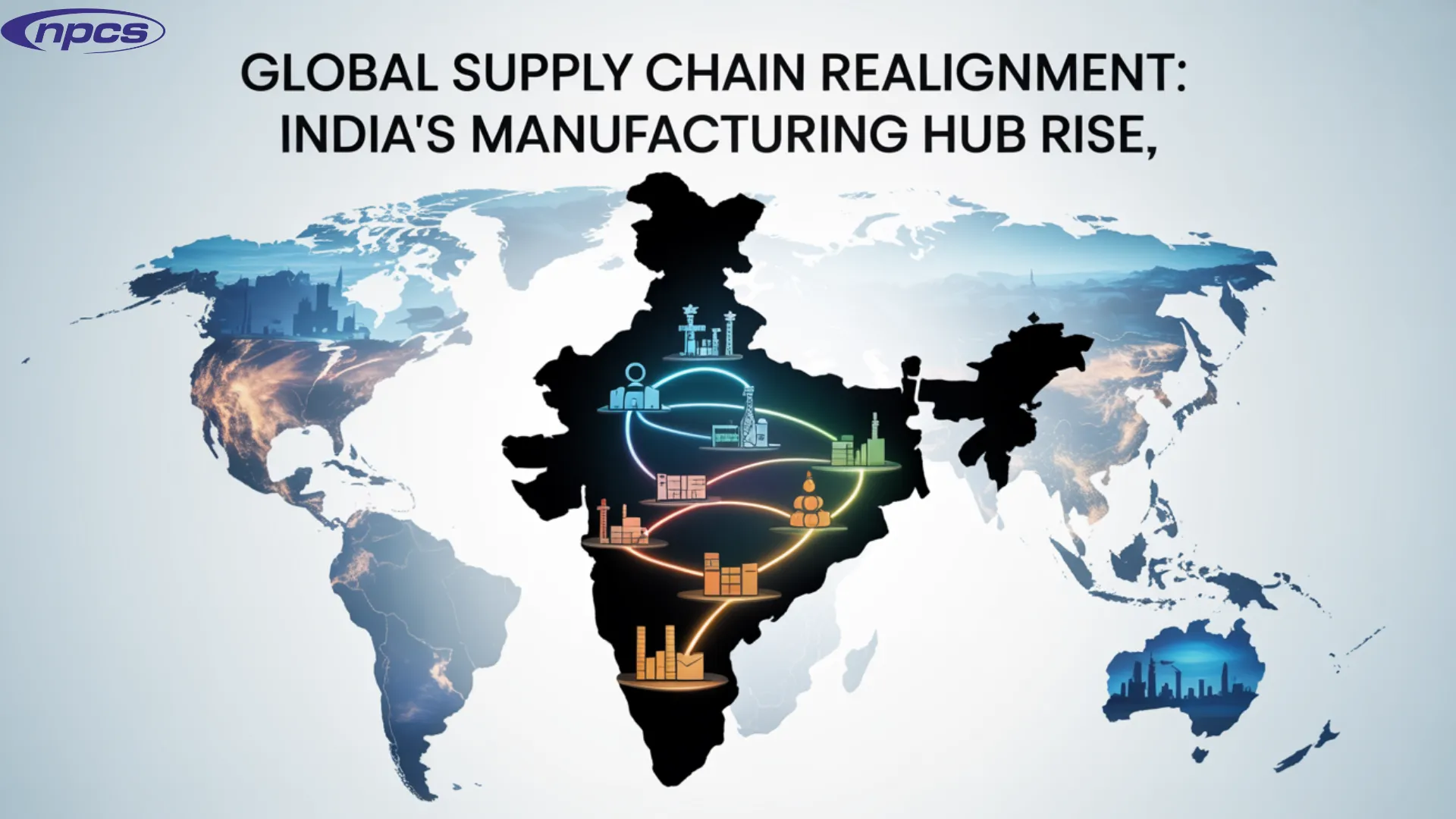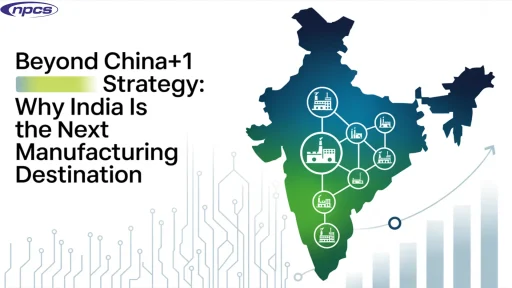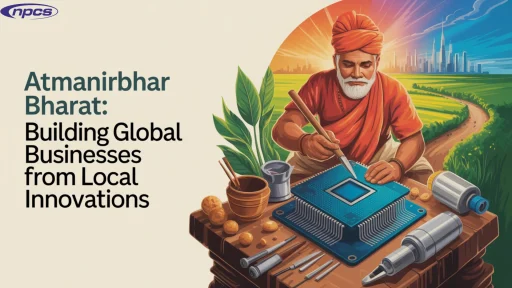The global economy is undergoing radical changes. At the center of this transformation is a phenomenon called global supply chain realignment, which describes the restructuring of how goods are produced, sourced, and delivered. On level ground, this juncture provides a unique opportunity for Indian entrepreneurs to plant India firmly on the world manufacturing map by way of its labor, policies, and technological readiness.
As multinational corporations consider reducing their dependence on singular manufacturing bases like China, the “China Plus One” strategy is being intensified. This diversification opens the path for India to shine as it marks its arrival on the scene as a strategic alternative in the new world order of global supply chain realignment.
Understanding the Global Supply Chain Realignment
Global supply chain realignment is the technical term for the actual strategic alterations such organizations are doing in their supply networks based on geopolitical issues, trade wars, and pandemic-induced disruptions. Such adjustments are being made to mitigate risks and promote continuity in business operations. Even as the global behemoths plod beyond their traditional geographical strongholds, India is slowly but very surely emerging as one of the most powerful competitors in the race toward becoming a leader in the next generation of world manufacturing.
The challenge before Indian entrepreneurs now is not in watching this trend unfold but in getting involved and facilitating or speeding up this process of realigning global supply chains.
Why India Is Emerging as a Top Manufacturing Hub
There are sufficient strategic reforms, investments, and benefits of demography that make India emerge as a manufacturing nation-the emergence is not incidental in India. Here are the reasons that add weight to India’s increasing profile on global supply chain realignment.
1. Demographic Dividend
India has a young, technology-savvy, and increasingly skilled workforce. This is a competitive advantage for the country–in labour terms–compared to ageing economies, which, being really cost-effective, have drawn mostly the attention of employees.
2. Government Incentives
Flagship initiatives like `Make in India’, the Production-Linked Incentive (PLI) Scheme, and Startup India all aim specifically at making India competitive for manufactured hubs within India. These provisions give away financial aid, cut down on compliance irritants, and open the door to global trade.
3. Infrastructure Development
Projects like Gati Shakti and the National Logistics Policy are linked to the modernization of transportation systems and supply chains in India. Effective ports, roads, and digital systems ensure that India makes its role in this global realignment more sustainable and robust.
4. Geopolitical Leverage
India’s neutral and stable geopolitical position allows it to form partnerships with both Western economies and regional powers. This positioning makes a firm contention for India to be the next go-to manufacturing hub in India.
High-Growth Sectors Driving India’s Manufacturing Boom
The fast-growing sectors with a global orientation will consolidate to transform India into a fully-fledged manufacturing hub in India.
Electronics & Semiconductors
With demand shooting through the roof and global chip shortages, many reach out to India for electronics manufacturing. Under the global supply chain realignment strategy, government policies are encouraging investments and developments in semiconductor fabrication and assembly lines.
Automotive and EVs
Cheap production costs and government incentives towards electric vehicles make India an attractive location for automakers looking to diversify. It’s not just for domestic consumption but is becoming a hub for a wider export market.
Textile & Garments
The textile sector has been among the most labour intensive and most cost sensitive, but is witnessing a sudden turn-around now. Global brands looking out for alternatives to China are placing their bets big-time on the ability of India to realize its long-term potential as a manufacturing base in India.
Pharmaceuticals
The COVID-19 pandemic has thrown the importance of pharmaceutical supply chains into sharp relief. India, already a leader in generics, has the potential to expand its capabilities to meet global health demands through global supply chain realignment.
Strategies Indian Entrepreneurs Must Adopt
Therefore, Indian entrepreneurs have to proactively set up their ventures in the new paradigm by aligning to the changed global scenario.
1. Digitize Supply Chain Operations
Employing Industry 4.0-The IoT, blockchain, and AI will empower organizations to enjoy better transparency, efficiency, and traceability in operations. These are indispensable in the face of competition under the new supply chain realignment trend of the world.
2. Resilience and Sustainability
Strategic diversification with localized sourcing and green logistics are today essential. Resilient and sustainable supply chains will outlast the rest and further build India’s case as a manufacturing hub in India.
3. Utilize Government Support
There is a plethora of financial and policy inducement. Entrepreneurs should, therefore, make relevant state and central government schemes available to them to obtain funding, tax rebates, and even export subsidies for India to improve as a manufacturing hub.
4. Collaborate and Scale
Joint ventures, foreign direct investment (FDI), and public-private partnerships can help scale operations faster. Aligning with global companies helps Indian firms integrate better into the global supply chain realignment network.
Overcoming Challenges in the Indian Supply Chain Landscape
These barriers would hinder changing India from the full-fledged manufacturing hub in India.
- Logistics Gaps: Freight, warehousing, and cold chain infrastructure still suffer from problems that need a year-round solution.
- Skill Development: The workforce has to be educated in automation, robotics, and AI so that they can prepare themselves for high-end manufacturing.
- Simplification of Policy: Bureaucratic delays and conflicting laws are major hurdles that need to be cleared for giving much-needed confidence to the international investors.
Case Studies: How Indian Companies Are Leading the Change
1. Electronics: Apple and Foxconn
Foxconn has, indeed, expanded its facilities in India. This is one of the important suppliers of Apple. These investments highlight the growing potential of India in the global supply chain realignment as a major electronics producer.
2. Automotive: Hyundai and Tata Motors
Indian manufacturing plants are now parts of the most serious global vehicle supply chain, particularly manufacturing for EV models and hybrids. In fact, Tata Motors is exporting EVs to Europe, consolidating its claims as a future-ready manufacturing hub in India.
Indian Logistics: The Backbone of Supply Chain Transformation
No global realignment of the supply chain will be complete without efficient logistics. For this reason, India’s logistics sector is engaging into a modernization process involving investment in digital freight platforms, blockchain-enabled tracking systems, and multimodal transport systems. This transformation both digital and physical supports the vision of a seamless manufacturing hub in India.
Future Outlook: India’s Role in Global Manufacturing
India is not simply an active participant in the remodeling of the global supply chain; it is framing the reconfiguration as well. A combination of favorable demographic trends, an army of highly tech-savvy entrepreneurs, and progressive governance will most likely give India a shot at being one of the top three manufacturing destinations in the global economy after 2030.
For most people, the dream of India as a manufacturing hub is something that is no longer just aspirational-it is becoming a reality. Those Indian entrepreneurs who manage to seize the moment with the correct strategies will not only be set to do well on the local scene but will be able to stake a claim as global players within the great fabric of supply.
Conclusion: India’s Defining Moment
India is ushered into a new era of opportunity with the global supply chain realignment. One could stand to solidify India’s ground as a world-class manufacturing hub in India by innovating. Re-silencing, and partnering among these entrepreneurs. The momentum is building-and the world is watching.
Now is the time to act, adapt, and lead.
Some More Links
Join With Us
Related Blogs
https://www.niir.org/blog/starting-a-silicon-crystals-business/
https://www.niir.org/blog/the-most-profitable-chemical-industry-business-in-the-philippines/#
Join us on YouTube
https://www.youtube.com/c/NIIRproject/playlists






